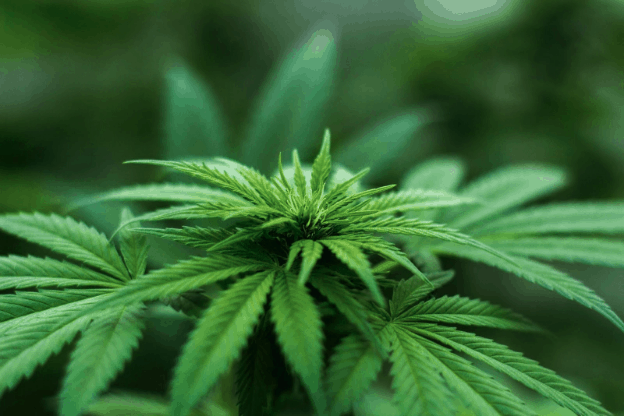Chronic pain is a huge problem worldwide, with an estimated 100 million people in America alone suffering from pain.
It is no wonder that growing numbers of patients are seeking a healthier and more natural alternative to traditional chronic pain medications.
For hundreds of years, cannabis has been a natural way of countering pain. However, over the last few decades as the plant has become better understood around the world, we are witnessing more cannabis products and consumption methods emerging. Market trends support the continued growth of the cannabis market creating a flood of new cannabis-derived products; such as cannabis edibles, extracts, cookies, and many more.
The history of using cannabis for pain relief
Cannabis has been cultivated and used for their medicinal purposes throughout history. Evidence suggests human production of it as far back as 12,000 years ago.
The cannabis plant has been revered as medicinal throughout this period, and cursed as a threat to the fabric of society. Yet there’s one aspect that stayed the same throughout this varied history.
Cannabis has been used as a plant medicinal product to treat an impressively wide range of diseases.
The earliest evidence of its medicinal use dates back to 2700 BC when the Cannabis plant’s analgesic (pain-relieving) properties were recorded by Chinese Emperor Shen Nung.
Many consider Shen Nung the father of Chinese medicine, which has helped to heal people for thousands of years through the use of natural remedies.
Medical uses
While cannabis (marijuana) remains a controlled substance in most parts of the world, research has led to the development and marketing of drugs which are synthetic cannabinoid prescription products.
The most popular uses for medical cannabis include chronic pain, chemotherapy-related nausea and cancer treatment-related vomiting, and painful muscle spasms.
There are however several other medical conditions for which marijuana can also be used by patients.
Marijuana or CBD for pain relief
People with chronic musculoskeletal pain, arthritis or other pain symptoms are increasingly turning to cannabis products to relieve them from various symptoms, such as pain, tiredness, insomnia and anxiety.
Even though cannabis plants are complicated and various varieties have different chemical compositions, nearly all contain some combination of two vital compounds: tetrahydrocannabinol and cannabidiol – or THC and CBD.
These are the two most researched compounds in marijuana, and both have been found to provide pain relief to patients in several published trials. THC can be very tightly regulated and may require special authorization from a doctor, depending on your location. CBD meanwhile is often much more freely available and online stores are preferred when comes down to where to buy CBD oil.
Although they may be the most common, it is definitely not THC and CBD which are the only compounds found in cannabis proven to have beneficial effects on human health.
Every cannabis plant has a unique blend of hundreds of plant compounds comprising flavonoids, terpenes, and phytocannabinoids.
Research suggests that these compounds influence our neurochemistry, and they can work synergistically together, producing better pain relief improvements than anybody would produce on their own.
How to use cannabis for pain relief
Smoking Cannabis for Pain Relief
While smoking cannabis may be the most well-known and traditional way of consumption, as new and exciting products hit the shelves, it is quickly becoming outdated.
While these revolutionary products boast a healthier substitute to the standard roll, marijuana lovers all know that after a long day at work there is sometimes nothing like smoking a joint, and nowadays, weed delivery is not as difficult as it used to be, thanks to legalisation in different parts of the country.
Vaping for Relief from Pain
For those who love the sensation of smoking but want to avoid the potential risks associated with it, the next best thing is vaping.
Vaping has undoubtedly been one of the biggest things to come out of the industry in recent years and you can get medicated quickly and easily by converting the active compounds in cannabis to vapour using heating conductors.
Whether you want a discreet vaporizer you can hold in your pocket (and use it as needed), or you want a bigger, full-size model you can use at home, there’s something for everyone on the market.
Edible cannabis products
Those looking for a decent edible cannabis product back in the day would be confined to funny-tasting pot brownies.
But you can indulge in cannabis-infused meals, drinks and snacks these days.
And what’s even better than smoking or vaping, is that the consequences last much longer when ingested.
For those finding a safe and long-lasting pain relief, you may really want to consider trying cannabis edibles.
CBD and THC Oils
One of the most popular cannabis products out there is CBD and THC, which are typically used for treating chronic pain and a wide range of other medical conditions.
Besides, cannabidiol won’t get you high – even though it’s full of powerful properties. This makes it a great option for most patients.
Wrapping up
Choosing the right cannabis product and method for you is an extremely personal choice, and what works for one person may very well not work for another person. It is for this reason that so many new and innovative products continue to be brought to the market so that you can keep on trying until you find the one that works best for you.
The Editorial Team at Healthcare Business Today is made up of skilled healthcare writers and experts, led by our managing editor, Daniel Casciato, who has over 25 years of experience in healthcare writing. Since 1998, we have produced compelling and informative content for numerous publications, establishing ourselves as a trusted resource for health and wellness information. We offer readers access to fresh health, medicine, science, and technology developments and the latest in patient news, emphasizing how these developments affect our lives.








